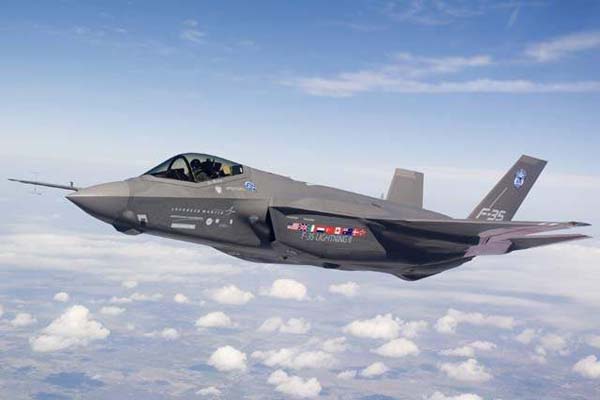That is just one of several issues identified by the Pentagon’s chief weapons tester in a February report, published online today by the nonprofit Project on Government Oversight. Other issues include flawed radar, ongoing challenges with the high-tech helmet required to fly the jet, and potential issues with the touch screen control interface. The operational utility evaluation (OUE) itself was extremely scaled down from the type of testing that is normally done with such a program, to the point where the authors of the report conclude that “the results of the OUE should not be used to make decisions regarding the readiness of the JSF system to support training inexperienced pilots in an F-35A initial qualification course.” “Due to the immaturity of the aircraft, the workarounds required to support flight operations, and very limited mission systems capability little knowledge can be gained from the OUE applicable to F-35 sustainment under normal squadron training operations or to sustainment of combat capable aircraft in operational units,” found the report.
“Additionally, the F-35 Joint Reliability and Maintainability Evaluation Team (JRMET) data for the F-35A fleet suggest that the program is not meeting reliability growth targets to meet operational requirements documents (ORD) requirements.”
Inspectors offered up five major categories of training tasks that are normally included in the fighter transition syllabus for other jets. Of those five, only one category was accomplished fully; two others were accomplished partially, and two were not accomplished due to system immaturity.
Additionally, testers found eight “serious” risk areas that need to be dealt with in the jet. Those range from a lack of flight test hours increasing the risk of a Class A mishap to the potential failure of the ejection seat in use with low-rate initial production (LRIP) 2 and 3 production craft.
Other issues identified as high risk include the fact LRIP 2 and 3 planes do not have an automated sensor that automatically releases an ejected pilot from their harness and upon submersion in water, which could lead to drowned pilots; the lack of protection from lightning strikes; and ongoing issues with pilot-vehicle interface that if not corrected leaves the authors with “no confidence that the pilot can perform critical tasks safely.”
“The F-35A air vehicle enabled the successful completion of the Block 1A syllabus for four student pilots during the period of the OUE, training them to safely take-off and fly in clear weather conditions, accomplish formation flight with another F-35 or F-16 aircraft, and land the aircraft — but not train for combat,” according to the report. “Only a very limited set of the full mission systems capability are working.”
The training syllabus was limited by flight restrictions for the jet. The F-35 is currently prohibited from flying at night or during weather conditions such as rain. Overall, “In a mature fighter aircraft, the familiarization phase is followed by several combat-oriented phases, such as air combat, surface attack, and night tactical operations,” according to the report. “The F-35A does not yet have the capability to train in these phases, nor any actual combat capability, because it is still early in system development.”
F-35 Report Warns of Visibility Risks
Significant visibility issues could lead to dangerous flight conditions, according to test pilots
09 Mart 2013 Cumartesi 06:58
reads.




 Advice for Enfield residents ahead of the General Election
Advice for Enfield residents ahead of the General Election Sunak promises tax cuts, economic stability, Conservative Party election manifesto
Sunak promises tax cuts, economic stability, Conservative Party election manifesto Ertan Karpazli, an independent MP candidate for the Enfield North constituency
Ertan Karpazli, an independent MP candidate for the Enfield North constituency Rishi Sunak announces a general election in a statement outside Downing Street
Rishi Sunak announces a general election in a statement outside Downing Street Residents of Spanish island of Mallorca launch initiative to thank tourists amid protests over mass tourism
Residents of Spanish island of Mallorca launch initiative to thank tourists amid protests over mass tourism Srebrenica Remembered, Lessons for Justice and Peace! YEE London held a reflective event
Srebrenica Remembered, Lessons for Justice and Peace! YEE London held a reflective event British Premier Keir Starmer to reset UK-EU relations with high-profile meetings
British Premier Keir Starmer to reset UK-EU relations with high-profile meetings Voters head to polls for UK general election
Voters head to polls for UK general election The Swiss official will take charge of the match between Real Madrid and Atalanta in Warsaw
The Swiss official will take charge of the match between Real Madrid and Atalanta in Warsaw Applications are now open for Walking and Cycling Grants London until 9 September 2024
Applications are now open for Walking and Cycling Grants London until 9 September 2024  Two Circles also appointed as exclusive media sales agency for UEFA Women’s Champions League
Two Circles also appointed as exclusive media sales agency for UEFA Women’s Champions League  England manager Gareth Southgate has resigned two days after defeat by Spain
England manager Gareth Southgate has resigned two days after defeat by Spain Joyce and Snell's planning application gets stamp of approval
Joyce and Snell's planning application gets stamp of approval The amount of bounce back loans fully repaid is just %13
The amount of bounce back loans fully repaid is just %13 Petrol prices higher than they should be, says RAC
Petrol prices higher than they should be, says RAC UEFA and Mastercard renew UEFA Champions League partnership
UEFA and Mastercard renew UEFA Champions League partnership
















